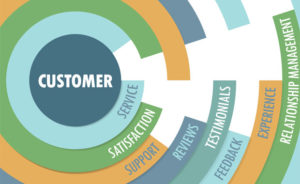Much of the discussion around sales and artificial intelligence has been outwardly focused. It’s exciting to think about using AI to examine leads, sift through data, and help deliver answers that allow salespeople to close more and bigger deals.
However, the excitement over using AI to organize customer information overshadows another use of AI that could be equally lucrative. AI also can be used to look inward and solve pressing sales issues — for example, sales churn.
Annual sales turnover rates are 26.9 percent for inside salespeople and 25.7 percent for outside salespeople, according to DePaul University’s Sales Effectiveness Survey. The average of the two — 26 percent — is twice as high than the average for all other professions.
Also, the cost of replacing salespeople has been increasing. The cost of replacing the average salesperson has ballooned to almost US$115,000, the same study indicated. If your sales organization has 100 salespeople, and your retention is average, you’re losing 26 salespeople a year, and it costs you $2.99 million to replace them.
Now, imagine that you could halt that churn. If you could even reduce it by a third, you’d add $1 million to your bottom line without landing a single new customer (although having those sales slots filled probably would help you get signatures on a lot more deals).
Don’t Punish the Overachievers
How can you attack the churn problem? First, you have to be able to spot the problem — only then can you take steps to address it. Spotting the problem is where AI can make a big impact.
To make AI your ally in reducing churn, you need to identify the indicators of churn, the telltale signs that a salesperson is getting close to jumping ship. AI can’t read salespeople’s minds, but it can read the data — if you train it properly and give it access to the right information around key indicators. What might those indicators be?
If you have an overachieving salesperson whose numbers to achieve bonuses or reach accelerators repeatedly have been adjusted upward, that salesperson is likely to look for other opportunities. Moving the goalposts on top performers is dangerous — the first adjustments may make sense, because they correct early assumptions about the salesperson’s capabilities.
If you make adjustments beyond that, however, a salesperson can become resentful. It can seem as if goals will be increased until the salesperson fails — a perception that pits the salesperson against the company, and which can force the salesperson to seek greener pastures.
Using AI to flag such situations can enable managers to counter those perceptions and manage more effectively at the same time.
Offer the Right Tools
Engaged salespeople want to know about the products they sell, and about additions to the product line. If you use an automatic training tool, that can provide you with insight about salespeople’s interest in continuing to represent the company. A drop-off in usage may suggest a likely churn scenario.
The flip side is when increased use of educational material fails to move the needle, creating a frustrating scenario that could cause a salesperson to move to a new gig. Using AI to find correlations between data can point out team members that managers may need to work with to overcome frustrations and keep talent.
A similar scenario involves an increase in the sales enablement system’s use of sales content and other material that isn’t complemented by an increase in sales performance. A salesperson may become dissatisfied about the support tools the organization uses and may decide to move on. If trained properly, AI can spot these conditions and flag them for managers.
The failure to capitalize on available bonuses and incentives is another red flag for churn. When salespeople go on autopilot and aren’t moved by new incentives, they’re likely to be disengaged and thus ready to jump to another company.
Utilization of sales technology is another classic indicator of sales dissatisfaction. It suggests that salespeople aren’t happy with the tools they’ve been given — and if that’s the case, then they may be looking elsewhere to find tools that work better for them.
Train Your AI Well
These are just a few areas where AI can surface indicators that salespeople are on the lookout for other opportunities. Sales managers need to examine their own operations and understand the most common sources of dissatisfaction, then work with Sales Ops to identify the data sources they need to train AI through the process of machine learning.
An organization might even set up a “churn scoring” system, similar to what is done for marketing, that can weigh the churn chances for every salesperson on an ongoing basis and allow managers to focus their retention efforts on those who score highest.
The flip side is that this also can help with planned attrition; if a company regularly lets some low performers go, it’s smarter to say goodbye to the ones already dissatisfied, and to retain and train salespeople with lackluster performance but who indicate by their behaviors that they are engaged and still want to stay with your team.
Training AI to spot these indicators may seem simple — but it’s not. AI focused on potential customers brings with it a major data challenge that sales and Sales Ops must work together to solve.
AI focused on salespeople hands Sales Ops a similar but different data challenge, tapping into internal systems — like sales performance management — to power AI. It may be tough at first, but saving the business $1 million per year finally might get Sales Ops the credit it deserves, and at the same time deliver a stronger, longer-tenured and more skilled sales force.
























































